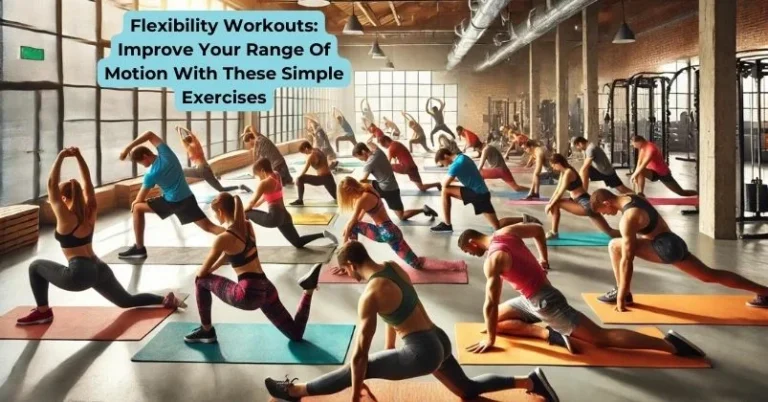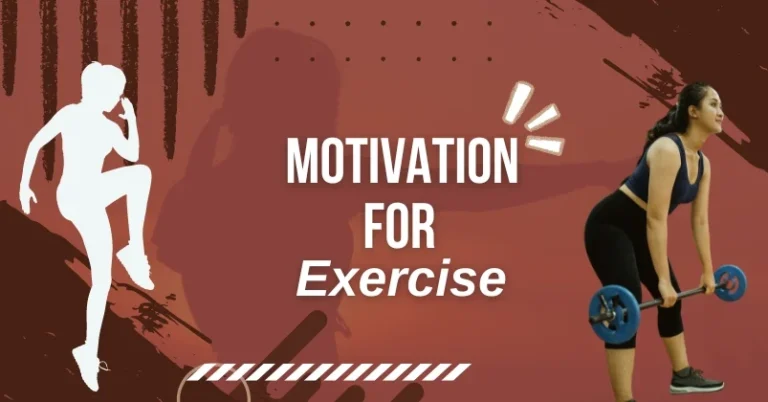Cardio Exercises: The Ultimate Guide to Burning Fat and Improving Heart Health
Cardio exercises are a great way to improve your overall health and fitness. They increase your heart rate and enhance your endurance. Cardio exercises can be performed at home or in a gym and can be tailored to your fitness level. Understanding the benefits of cardio exercises and how to incorporate them into your routine can help you achieve your fitness goals.
Cardio exercises have numerous benefits for your health. They can help you lose weight, improve your cardiovascular health, reduce your risk of chronic diseases, and boost your mood. There are many different types of cardio exercises, including running, cycling, swimming, and dancing. Beginners can start with low-impact exercises like walking or cycling, while advanced exercisers can try high-intensity interval training (HIIT) or circuit training.
The Centers for Disease Control and Prevention (CDC) recommends that people 18 and older get at least 150 minutes of moderate-intensity cardio exercise per week or 75 minutes of vigorous-intensity cardio exercise per week.
Understanding Cardio
Cardiovascular, or cardio, exercise works by making your heart and lungs work harder to supply oxygen to your muscles while you move. This can improve your cardiovascular health, increase your stamina, and help you burn calories:
Increases oxygen supply
Cardio exercise increases the amount of oxygen your body receives, which allows your muscles to work more efficiently.
Improves cardiovascular health
Regular cardio exercise can strengthen your cardiovascular system, making it easier for your heart and lungs to supply oxygen to your muscles.
Burns calories
During cardio exercise, your body first uses up its stored energy, then starts burning calories from fat.
Increases stamina
As you exercise regularly, your muscles adapt to the increased workload, making it easier to perform regular activities.
Cardio exercises, also known as cardiovascular exercises, are physical activities that increase your heart rate and breathing rate, causing you to breathe deeply and sweat. These exercises are an essential part of any fitness routine, offering numerous benefits for your health and well-being.
How Cardio Works
Cardio exercises work by increasing your heart rate, which in turn raises the amount of oxygen your body needs. Your lungs work harder to take in more oxygen, which is then transported to your muscles to help them function more efficiently. As you continue with cardio exercises, your body becomes more efficient at using oxygen, improving your endurance and overall fitness level.
Benefits Of Cardio Exercises

ImproveS cardiovascular health
Cardio exercises can help improve the health of the heart, blood vessels, and lungs. It reduces the risk of heart disease, lowers blood pressure, and improves circulation in the body.
Weight loss
Cardio exercises are great for burning calories and help in weight loss. It helps in shedding excess body fat, which can improve overall health and self-esteem.
ReduceS stress and anxiety
Cardio exercises can help reduce stress and anxiety levels in individuals. It promotes the release of endorphins, which is a natural mood booster and improves overall mental health. As the heart rate and breathing increase, endorphins, the body's natural mood boosters, are released, improving the mood, and reducing stress, anxiety, and depression.
ImproveS sleep
Cardio exercises can help improve sleep quality and duration. It helps in falling asleep faster, staying asleep longer, and improving the overall sleep cycle.
IncreaseS stamina
Cardio exercises can help improve overall endurance and stamina levels. It enables individuals to work out for longer periods of time, leading to more calories burned and better overall fitness levels.
ReduceS risk of chronic diseases
Cardio exercises reduce the risk of chronic diseases like diabetes, stroke, and some forms of cancer. It improves overall health and reduces the risk of premature death.
ImproveS cognitive function
Cardio exercises can improve cognitive function by enhancing blood flow and oxygen to the brain. This leads to better focus, concentration, and overall mental clarity. Exercising regularly also enhances brain function and cognitive abilities, improving memory, focus, and decision-making skills.
ImproveS metabolism
Cardio exercises can increase metabolism, which is the rate at which the body burns calories. This leads to better overall health and fitness levels and promotes weight loss and weight management.
ImproveS lung health
As the body adapts to the increased demand for oxygen, the respiratory and cardiovascular system improves, making it more efficient for the body to perform physical activities. This, in turn, strengthens the heart, lungs, and other muscles, reducing the risk of cardiovascular diseases, diabetes, and obesity.
Overall, cardiovascular exercises are an excellent way to improve one's physical and mental well-being.
Cardio Exercises For Beginners

Beginner exercises do not require previous experience of physical activity or special training to perform. A person can usually increase the intensity as they advance in their cardiovascular ability.
- Marching in place can elevate the heart rate, making this exercise a suitable choice for a warm-up or single cardio activity. To increase the intensity, a person can increase their march speed or raise their knees.
- Single leg stand exercise works the abdominal muscles. To increase difficulty, a person can lift their leg higher off the floor or jump from one leg to the other more quickly.
- Dancing to music, bouncing lightly from one foot to the other. At the same time, swing the arms from side to side. A person can turn free space into a dancefloor at home. Dancing to upbeat music can burn calories, while people may find it very enjoyable as an exercise.
- Arm circles can be performed while sitting or standing, making them ideal for all skill levels.
- Wipers exercise, a person should perform this exercise while lying down, which works the abdominal muscles, chest, and shoulders.
- The trunk rotation works the abdominal muscles while testing the cardiovascular system. To increase the intensity, a person can hold a heavy weight, such as a kettlebell, exercise ball, or other household items.
- Air squats work the thigh muscles, hamstrings, quadriceps, and glutes. Since good balance is required, they are an excellent way to engage the core muscles as well.
Remember to always listen to your body and start with activities that are comfortable for you. Gradually increase the intensity and duration of your workouts as you build up your stamina.
Intermediate To Advanced Cardio Exercises
Intermediate to advanced cardio exercises are ideal for those who want to increase their heart rate, burn calories, and improve their overall fitness level. Some of these exercises include:
- Running: Running is an excellent way to get your heart rate up and burn calories. It is a high-impact exercise that can be done both indoors and outdoors. Running can be done at a steady pace or can be done as interval training to increase the intensity.
- Jumping Jacks: Jumping jacks are a great way to get your heart rate up and work your entire body. They are low-impact exercises that can be done anywhere.
- Jump Rope: Jump rope is a great way to improve cardiovascular fitness and coordination. It is a high-impact exercise that can be done indoors or outdoors.
- Mountain Climbers: Mountain climbers are a great way to work your core and improve cardiovascular fitness. They are high-intensity exercises that can be done anywhere.
- Burpees: Burpees are a full-body exercise that can be done anywhere. They are a high-intensity exercise that can improve cardiovascular fitness and burn calories.
- Squat Jumps: Squat jumps are a great way to work your legs and improve cardiovascular fitness. They are high-intensity exercises that can be done anywhere.
- Tuck Jumps: Tuck jumps are a great way to work your legs and improve cardiovascular fitness. They are high-intensity exercises that can be done anywhere.
- Box Jumps: Box jumps are a great way to work your legs and improve cardiovascular fitness. They are high-intensity exercises that can be done at the gym or at home.
- High Knees: High knees are a great way to work your legs and improve cardiovascular fitness. They are high-intensity exercises that can be done anywhere.
- Speed Skaters: Speed skaters are a great way to work your legs and improve cardiovascular fitness. They are high-intensity exercises that can be done anywhere.
- Lunge Jumps: Lunge jumps are a great way to work your legs and improve cardiovascular fitness. They are high-intensity exercises that can be done anywhere.
Cardio For Specific Health Conditions
Cardiovascular exercise has numerous benefits for overall health, but it can be especially beneficial for individuals with specific health conditions. Here are some ways cardio can help manage and improve certain health conditions:
Diabetes
Cardiovascular exercise can help individuals with diabetes manage their blood sugar levels and improve insulin sensitivity. It can also aid in weight loss and improve cardiovascular health, which is important for individuals with diabetes who are at a higher risk for heart disease.
Heart Disease
Cardiovascular exercise is a key component in managing and preventing heart disease. It can help improve heart function, lower blood pressure, and reduce cholesterol levels. Individuals with heart disease need to consult with their healthcare provider before starting a new exercise program.
High Blood Pressure
Cardiovascular exercise can help lower blood pressure by improving heart function and reducing the stiffness of blood vessels. Individuals with high blood pressure need to monitor their blood pressure during exercise and consult with their healthcare provider before starting a new exercise program.
High Cholesterol
Cardiovascular exercise can help improve cholesterol levels by increasing HDL (good) cholesterol and reducing LDL (bad) cholesterol. It can also aid in weight loss, which can further improve cholesterol levels. Individuals with high cholesterol need to consult with their healthcare provider before starting a new exercise program.
Obesity
Cardiovascular exercise is an effective way to manage and prevent obesity. It can help individuals lose weight, improve body composition, and reduce the risk of obesity-related health conditions. Individuals with obesity need to start with low-impact exercises and gradually increase intensity and duration.
Cancer
Cardiovascular exercise can help improve the quality of life for individuals with cancer by reducing fatigue, improving mood, and increasing overall fitness levels. It is important for individuals with cancer to consult with their healthcare provider before starting a new exercise program and to start with low-impact exercises.
Incorporating Cardio Into Your Routine
Cardio exercises are an essential part of a healthy lifestyle. They help improve heart health, increase stamina, and burn calories. Incorporating cardio into your routine is easy and can be done in a variety of ways. Here are some tips to help you get started:
Schedule
Scheduling your cardio workouts is essential to ensure consistency. Choose a time that works best for you and stick to it. It could be in the morning before work, during lunchtime, or in the evening after work. Consistency is key when it comes to cardio workouts, so make sure you schedule them into your routine.
Consistency
Consistency is essential when it comes to cardio workouts. Aim to do at least 30 minutes of cardio three to four times per week. You can gradually increase the duration and frequency as your fitness level improves. Consistency will help you achieve your fitness goals and maintain a healthy lifestyle.
Duration
The duration of your cardio workouts will depend on your fitness level and goals. Aim to do at least 30 minutes of moderate-intensity cardio per session. You can increase the duration to 60 minutes or more if you want to burn more calories or improve your endurance. It's important to listen to your body and not overdo it. If you're just starting, it's okay to start with shorter durations and gradually increase them.
Goals
Setting goals is essential to help you stay motivated and track your progress. Whether you want to lose weight, improve your endurance, or reduce your risk of heart disease, setting specific goals will help you achieve them. Make sure your goals are realistic and achievable. You can use a fitness tracker or an app to track your progress and celebrate your achievements.
Incorporating cardio into your routine is easy and can be done in a variety of ways. Whether it's running, cycling, swimming, or dancing, find an activity that you enjoy and make it a part of your routine. Remember to schedule your workouts, be consistent, gradually increase the duration, and set achievable goals. With these tips, you'll be on your way to a healthier, more active lifestyle.
Cardio And Other Forms Of Exercise
Endurance workouts are usually described as cardiovascular exercises, informally referred to as cardio, whose practice promotes fitness. This fitness practice is beneficial for enhancing cardiovascular health, weight loss, and improving stamina among others. However, achieving most if not all fitness goals cannot just be done by only practicing cardio. Other activities within the same perimeter such as weight lifting and resistance training, yoga, boxing, or dancing can be additional features to achieve a complete fitness regime.
Strength training and resistance training both help in gaining, and more importantly, maintaining the existing muscle mass. These also help to build and improve muscle strength through the improvement of bone density, which makes injury less likely to happen. Generally, strength training includes weight lifting, the use of bands for resistance purposes, or exercises that use the weight of one’s body such as push-ups or squats. On the other hand, resistance training is where one uses pertinent machines or weights to develop muscles.
Yoga is an exercise that encourages a person’s flexibility and focuses on their mental control and balance. That is it makes the person’s body as a whole more flexible and in addition, helps to lessen stress and anxiety. Yoga can be beneficial in the cardio regimes of workloads since it enhances mobility and thus minimizes the chances of sustaining injuries.
Boxing brings a lot of fun because it is an exercise that includes concentric and eccentric movements in the entire body, thus improving the power and endurance of the body. It consists of punching, kicking, and footwork and it can help reduce fitness levels as well as stress and tension.
Dancing is a great way to encourage physical activity. It helps to enhance a person’s coordination and balance whilst giving an excellent cardio workout. Due to the cardio benefits, dancing or similar activities can help break the monotony of a workout regimen in a very entertaining manner.
Overall fitness and reduce the risk of injury. By combining cardio with other forms of exercise like strength training, resistance training, yoga, boxing, or dancing, you can achieve a more well-rounded fitness routine that will help you achieve your fitness goals.
Safety and Precautions in Cardio Exercises
Cardio exercises are an excellent way to improve cardiovascular health, burn calories, and reduce the risk of chronic diseases. However, it is essential to take precautions to ensure that you exercise safely and avoid injury. In this section, we will discuss some safety tips and precautions that you should consider when performing cardio exercises.
Consult With A Doctor
Before starting any exercise program, it is essential to consult with a doctor, especially if you have any underlying health conditions. According to the American College of Sports Medicine, individuals with chronic or unstable health conditions such as heart disease, respiratory ailments like asthma, high blood pressure, joint or bone disease, neurological illness, or diabetes should consult with a doctor before starting any exercise program.
Start Slowly And Progress Gradually
It is crucial to start slowly and progress gradually when performing cardio exercises. According to the U.S. Department of Health and Human Services, adults should aim for at least 150 minutes of moderate-intensity aerobic exercise or 75 minutes of vigorous-intensity aerobic exercise per week. However, it is essential to start slowly and gradually increase the intensity and duration of your workouts to avoid injury.
Warm-up And Cool-down
Warming up and cooling down before and after exercise is crucial to prevent injury and improve performance. The Physical Activity Guidelines for Americans recommend that individuals warm up for at least five to ten minutes before exercise and cool down for at least five to ten minutes after exercise. Warming up helps increase blood flow to the muscles and prepares them for exercise while cooling down helps reduce heart rate and prevent blood pooling in the legs.
Stay Hydrated
Staying hydrated is essential when performing cardio exercises, especially in hot and humid weather. According to the American Heart Association, it is essential to drink water before, during, and after exercise to prevent dehydration. Dehydration can lead to fatigue, dizziness, and muscle cramps, which can increase the risk of injury.
Wear Appropriate Clothing And Footwear
Wearing appropriate clothing and footwear is essential when performing cardio exercises. Loose-fitting and comfortable clothing can help regulate body temperature and prevent chafing, while supportive and cushioned footwear can help absorb shock and reduce the risk of injury. It is also essential to wear reflective clothing if exercising in low-light conditions to increase visibility.
Conclusion
In summary, cardio exercises are an excellent way to improve cardiovascular health and reduce the risk of chronic diseases. However, it is essential to take precautions to ensure that you exercise safely and avoid injury. Consult with a doctor, start slowly and progress gradually, warm up and cool down, stay hydrated, and wear appropriate clothing and footwear to ensure a safe and effective workout.
FAQs
The most effective cardio exercises for weight loss are those that get your heart rate up and keep it elevated for an extended period of time. Some examples of effective cardio exercises for weight loss include running, cycling, swimming, jumping rope, and high-intensity interval training (HIIT).
Power walking is a great way to incorporate cardio into your daily routine. To make it more effective, try increasing your pace and walking on inclines or hills. You can also add weights or resistance bands to your routine to increase the intensity.
There are many beginner-friendly cardio exercises that can be done at home, such as jumping jacks, high knees, mountain climbers, and dancing. These exercises are easy to do and require little to no equipment.
Cardiovascular endurance exercises, also known as cardio exercises, have many benefits, including improved heart health, increased lung capacity, increased endurance, and reduced risk of chronic diseases such as diabetes, obesity, and heart disease.
The top five cardio exercises for overall fitness are running, cycling, swimming, rowing, and jumping rope. These exercises work multiple muscle groups and provide a full-body workout, making them great for improving overall fitness and endurance.








